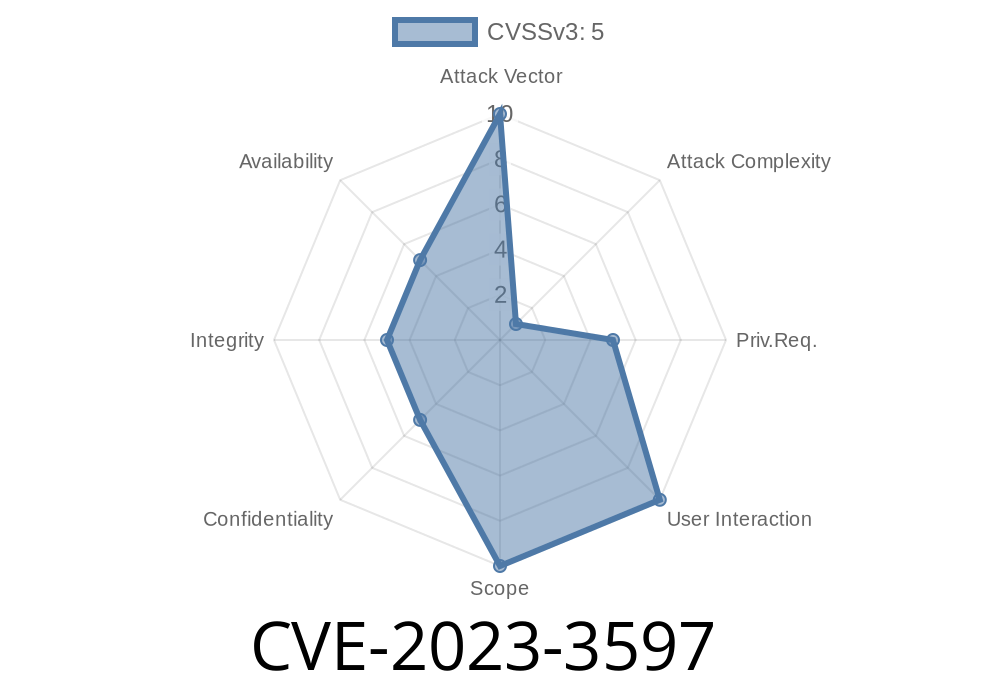A critical security vulnerability (CVE-2023-3597) has been discovered in Keycloak, a widely-used open-source Identity and Access Management (IAM) solution. This vulnerability allows an attacker to bypass the authentication process by exploiting a flaw in client step-up authentication validation. This blog post will provide an in-depth explanation of the vulnerability, provide code snippets, exploit details, and links to the original references.
Vulnerability Details
The vulnerability exists in the way Keycloak validates its client step-up authentication within the org.keycloak.authentication package. Due to this flaw, a remote attacker, once authenticated using a low-level password, can falsely register a second authentication factor along with the existing one, eventually bypassing multi-factor authentication (MFA).
To better understand this issue, let's have a look at the following code snippet, which demonstrates the incorrect validation of client step-up authentication:
package org.keycloak.authentication;
public class ClientStepUpAuthenticator {
...
public void authenticate(AuthenticationFlowContext context) {
...
if (clientStepUpAuthLevel <= clientAuthLevel) {
context.success();
} else {
context.attempted();
}
}
...
}
Here, the problem lies in the improper comparison of the client step-up authentication level (clientStepUpAuthLevel) and the client authentication level (clientAuthLevel). Due to this misvalidation, the attacker can manipulate the client authentication level, thus bypassing the MFA.
Exploit Details
To exploit this vulnerability, the attacker must first authenticate using a low-level password. Once authenticated, the attacker can craft a malicious request that falsifies a second authentication factor. By manipulating the client authorization level, the attacker can bypass the multi-factor authentication process.
Here is an example of a malicious request that exploits the vulnerability
POST /keycloak/auth/realms/myrealm/login-actions/authenticate HTTP/1.1
Host: keycloak.example.com
Content-Type: application/x-www-form-urlencoded
...
username=attacker&password=lowlevelpassword&clientAuthLevel=2&clientStepUpAuthLevel=1
In this example, the attacker has set the clientAuthLevel to 2 and the clientStepUpAuthLevel to 1. As a result, the condition in the authenticate method will be satisfied (clientStepUpAuthLevel <= clientAuthLevel), and the context will be marked as successful, allowing the attacker to bypass the MFA.
Mitigation and Recommendations
_Keycloak has released a patch to address this vulnerability._ To mitigate this vulnerability, it is strongly recommended that you update your Keycloak instance to the latest version. Additionally, you can take the following steps to further secure your Keycloak environment:
Monitor your Keycloak logs to identify any suspicious activity.
4. Train your developers on secure coding practices, specifically in the area of authentication and authorization.
Original References
For more information on the vulnerability and its impact, please refer to the following original references:
1. CVE-2023-3597 - National Vulnerability Database (NVD)
2. Keycloak Project - Official Website
3. Keycloak Github Repository
By staying informed and aware of security vulnerabilities, you can help protect your organization from potential threats. Be sure to keep your Keycloak instances up to date and follow recommended security practices to maintain a secure environment.
Timeline
Published on: 04/25/2024 13:15:50 UTC
Last modified on: 04/25/2024 13:18:02 UTC
